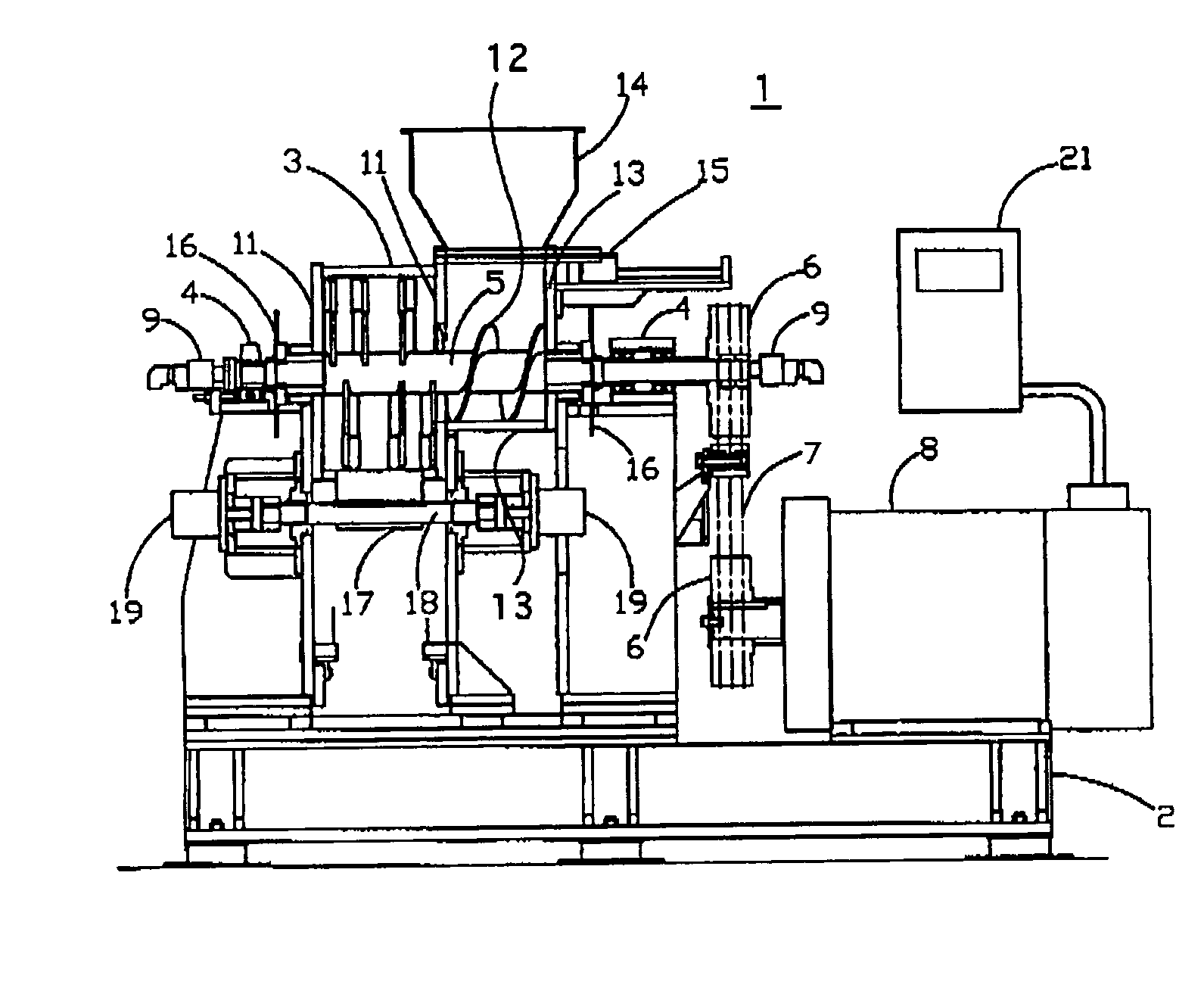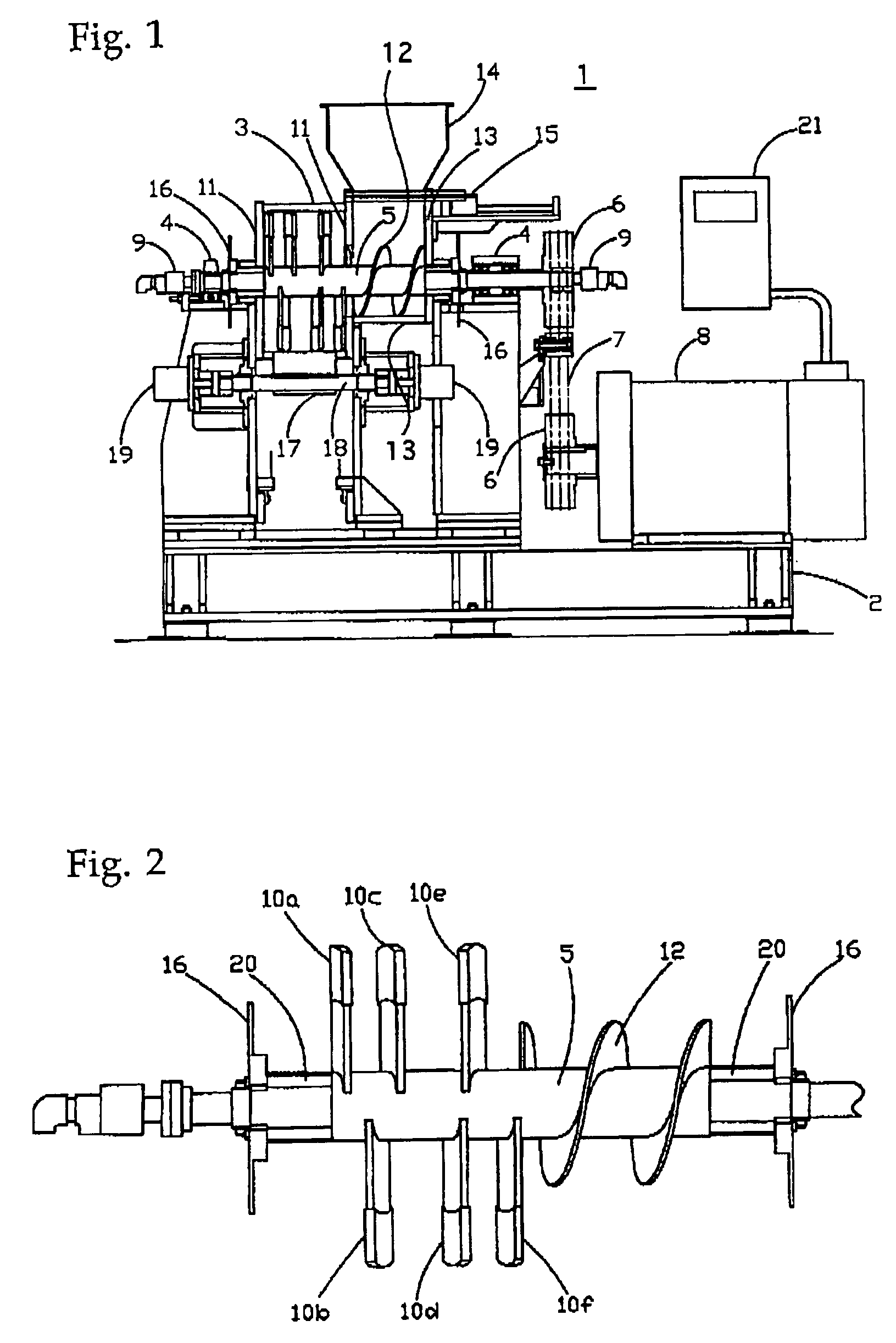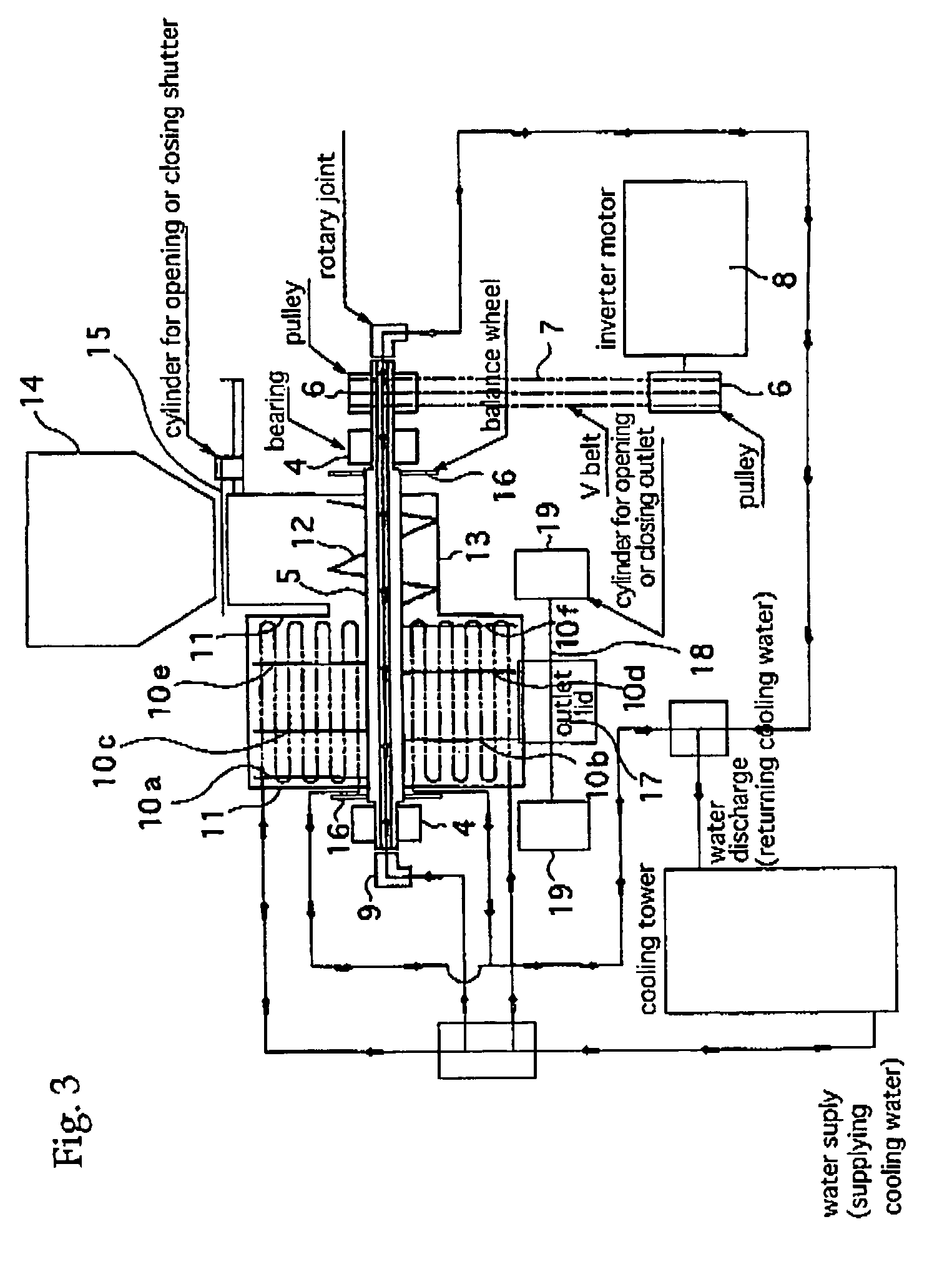Mixing and pulverizing device, melting method for mixing, and method of molding cellulose material impregnated with binder
a technology of cellulose-based materials and mixing devices, which is applied in the direction of auxillary shaping apparatus, butter manufacture, chemical/physical processes, etc., can solve the problems of releasing environmental load in reusing wasted materials, unable to carry out, and the filling rate of wood in most commercial molding materials filled with wood powder currently exceeding 50% by weight, so as to prolong the motor life
- Summary
- Abstract
- Description
- Claims
- Application Information
AI Technical Summary
Benefits of technology
Problems solved by technology
Method used
Image
Examples
first embodiment
[0053]A crushing and mixing device of a first embodiment of the present invention and a mixing and melting method employing the crushing and mixing device is, as shown in FIG. 1 and FIG. 2, the crushing and mixing device having a mixing vessel 3 in which a plurality of blades 10a to 10f are installed on a rotary shaft 5 which is rotated by a motor 8 working as a driving source and freely rotatably supported, to mix and crush materials; wherein a spiral vane 12 is equipped to supply the materials which are introduced to a rotary shaft corresponding to an inlet for materials, to the mixing vessel; at least two blades of the plurality of blades 10a to 10f are installed on the rotary shaft 5 in an arrangement being inclined at an angle which reduces each other's opposing space in the rotating direction; an outlet 17 is disposed at a side of a wall of the mixing vessel 3 to take out the materials mixed and crushed in the mixing vessel; and the materials are mixed and crushed, and the ent...
second embodiment
[0059]A crushing and mixing device in a second embodiment of the present invention is the crushing and mixing device, as shown in FIG. 1 and FIG. 6, having a mixing vessel 3 in which a plurality of blades 10a to 10f are installed on a rotary shaft 5 which is rotated by a driving source and freely rotatably supported, to mix and crush materials; wherein a spiral vane 12 is equipped to supply the woody materials and / or plant materials and binders which are introduced to a rotary shaft 5 corresponding to an inlet 14 for materials, to the mixing vessel 3; the plurality of blades are constituted by a plurality of blades which are installed on the rotary shaft in an arrangement opposing each other in the axial direction of the rotary shaft on a site spaced at a predetermined angle in the circumferential direction thereof as well as being inclined at an angle which reduces each other's opposing space in the rotating direction; the inclined angle of the blades to the rotary shaft is unchang...
example
[0080]In the mixing and melting device 1 and the mixing and melting method of the Example, as shown in FIG. 1 and FIG. 3, the rotary blade shaft 5 and the mixing vessel 3 are cooled by respectively circulating cooling water through the inside of the rotary blade shaft 5 in its axial direction and through the loop wound like headband in the wall of the mixing vessel 3.
[0081]The blades 10a to 10f are rotated by the motor 8 via the rotary blade shaft 5. When peripheral velocity of blades 10a to 10f reach 5 meters per second, the split woody waste material (cedar: 85% by weight) and the binder (PP: 12% by weight, maleic anhydride: 3%) which have been weighted in advance and introduced to the hopper 14, are supplied to the material feeding box 13 by opening the shutter 15, followed by the shutter 15 being closed. The materials are forced into the mixing vessel 3 by rotation of the feeding screw 12.
[0082]After the hopper 14 is emptied, the shutter 15 is closed and the rotation of the moto...
PUM
| Property | Measurement | Unit |
|---|---|---|
| velocity | aaaaa | aaaaa |
| grain size | aaaaa | aaaaa |
| temperature | aaaaa | aaaaa |
Abstract
Description
Claims
Application Information
 Login to View More
Login to View More - R&D
- Intellectual Property
- Life Sciences
- Materials
- Tech Scout
- Unparalleled Data Quality
- Higher Quality Content
- 60% Fewer Hallucinations
Browse by: Latest US Patents, China's latest patents, Technical Efficacy Thesaurus, Application Domain, Technology Topic, Popular Technical Reports.
© 2025 PatSnap. All rights reserved.Legal|Privacy policy|Modern Slavery Act Transparency Statement|Sitemap|About US| Contact US: help@patsnap.com



